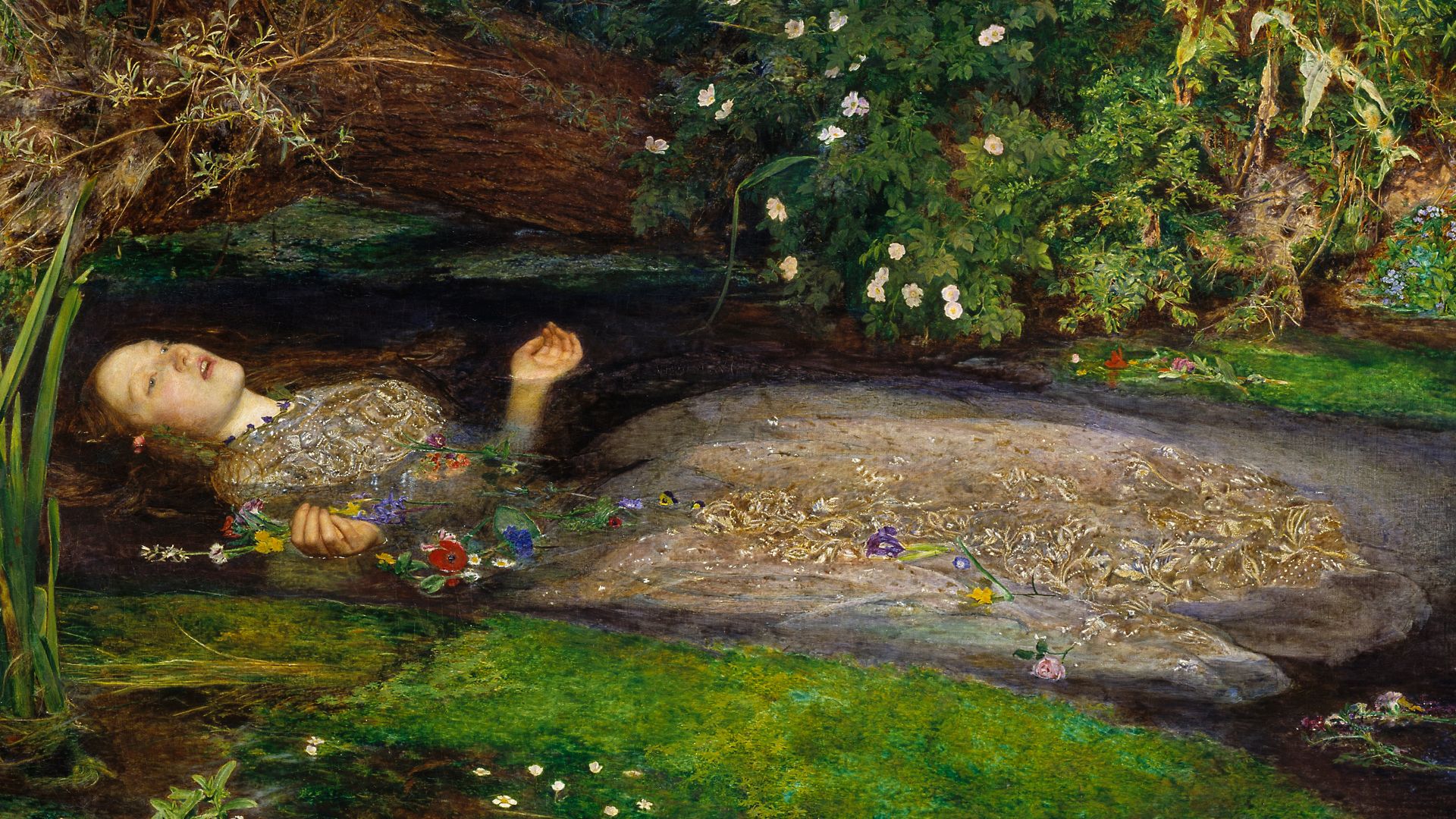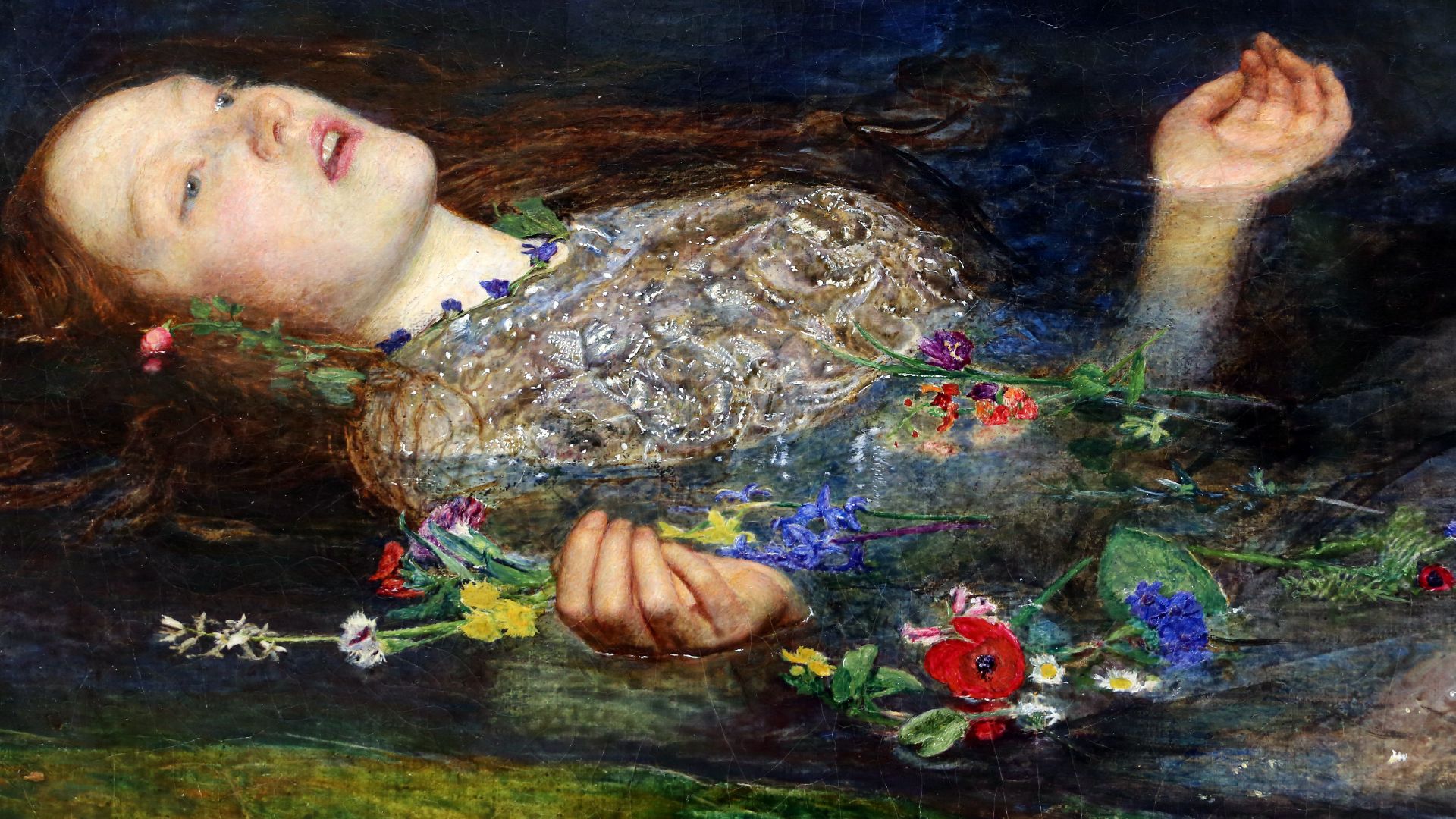 John Everett Millais on Wikimedia
John Everett Millais on Wikimedia
If you're reading this, you probably studied Hamlet in your high school English class. And, if you've studied Hamlet, you're probably familiar with John Everett Millais's painting of Ophelia. After all, it's one of the most famous depictions of the most famous plays in the English language.
If it's been a while since high school English class and you're a bit rusty on your Shakespeare, allow us to fill you in. Ophelia's been on the airwaves quite a lot recently. Unfortunately, many retellings of her story get the details wrong.
Ophelia's Story
Ophelia is the eldest daughter of a Danish nobleman, Polonius. As the play opens, her family is only slightly less dysfunctional than Hamlet's. Ophelia's mother is long dead, her father is a pompous wind-bag, and her brother is somewhat hot-tempered, flitting between France and Denmark.
Ophelia is not Hamlet's fiancée or girlfriend, but she is prime candidate for the prince's hand in marriage. Unfortunately, Hamlet is less than an ideal romantic partner. Wracked by his own grief following his father's murder most foul, Hamlet feigns madness to bring the murderer to justice.
Poor Ophelia is just one of the many bodies that piles up at the end of the play. Hamlet breaks her heart, ruins her reputation, and kills her father.
Every man in Ophelia's life seeks to control her, nobody takes time to listen to her. Ophelia goes mad too—though, there's a debate, as with Hamlet's madness, over how much is a performance—but by then it's too late to save her. Mad with grief, Ophelia sings bawdy songs and hands out symbolic flowers, telling the other characters that she sees who they really are.
Then, just like that, Ophelia drowns. A branch gives way while she is climbing a willow tree, and she plunges into the river below. Whether she is unable to fight the current or merely lets herself drown is never made clear.
Her death is recounted by Gertrude, the only other female character in the play. The audience has no idea whether or not Gertrude is telling the truth or twisting it to fit a motive. Even in death is Ophelia robbed of her agency and her voice.
While Ophelia was not a real person, Elizabeth Siddal was. That's the name of the woman whose image Millais captured. The vacant eyes that look outwards from the walls of the Tate Britain are Siddal's eyes.
Elizabeth Siddal's Story
Elizabeth Siddal was a painter in her own right, though she is best known as a muse for the Pre-Raphelite Brotherhood. This artistic movement focused on historical accuracy and attention to detail. Doomed maidens like Ophelia were among their favorite subjects.
Siddal first modeled for the brotherhood at the age of 20. Her grey eyes and copper hair made her irresistible not only to John Everett Millais, but to Dante Gabriel Rosetti, who took Siddal as his lover as well as his muse. Before long, Elizabeth Siddal's image was synonymous with feminine beauty.
Millais was known for his slavish devotion to details. He painted the river first, setting up his easel by the Hogsmill River in Surrey, England. Every flower pictured either appears in Hamlet or grows along the banks of the Hogsmill.
In order to capture Ophelia in her last moments, Siddal floated in a bathtub filled with water for weeks on end. It was winter, and the tub was heated below by oil lamps to keep the water from freezing. Even so, Millais was so engrossed in his work that he did not notice when they went out, and Siddal was afraid to move.
Siddal caught pneumonia as a result. Her father sent Millais a £50 bill for a doctor's visit. Millais paid only when threatened with legal action, and Siddal gradually recovered.
Elizabeth Siddal, like many women from poor families—even those married to famous painters—was dogged by ill-health all her life. Some claim tuberculosis, others say a stomach complaint. Either way, her bout of pneumonia could not have helped.
In addition to depression, Siddal struggled with anorexia and laudanum addiction. She was too weak to walk the five minutes to her wedding chapel. Her illness gave her access to laudanum, which only made her worse.
Siddal's struggles with mental health impacted her ability to get pregnant. Her first daughter was stillborn, which sent Siddal into post-partum depression. She was found dead in 1862, at the age 32.
The cause of Elizabeth Siddal's death was an overdose of laudanum. However, there remains controversy over whether or not she took her own life. A note was allegedly burned to ensure she had a Christian burial.
163 years after her death, Elizabeth Siddal as Ophelia looks out from gallery walls, a suicide in slow motion.
KEEP ON READING

The Woman Without A Name
Mary Doefour was the woman without a name. In 1978,…
By Robbie Woods Dec 3, 2024
The 10 Worst Generals In History
Bad Generals come in all shapes and sizes. Some commanders…
By Robbie Woods Dec 3, 2024
10 Historical Villains Who Weren't THAT Bad
Sometimes people end up getting a worse reputation than they…
By Robbie Woods Dec 3, 2024
One Tiny Mistake Exposed A $3 Billion Heist
While still in college, Jimmy Zhong discovered a loophole that…
By Robbie Woods Dec 3, 2024
The Double Life And Disturbing Death of Bob Crane
Bob Crane was the star of Hogan's Heroes from 1965-1971.…
By Robbie Woods Dec 3, 2024
The Most Surprising Facts About North Korea
North Korea may be the most secretive state in the…
By Robbie Woods Dec 3, 2024


